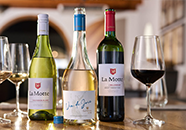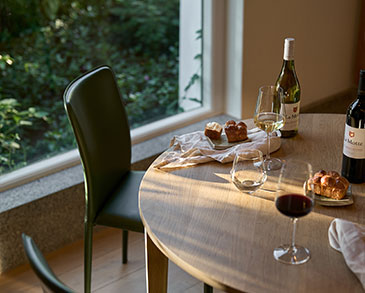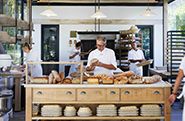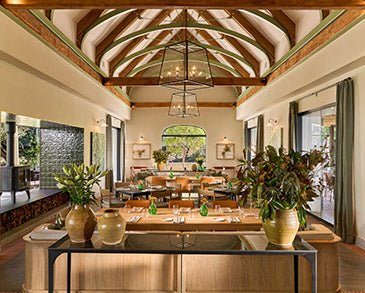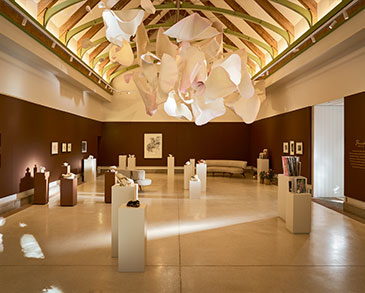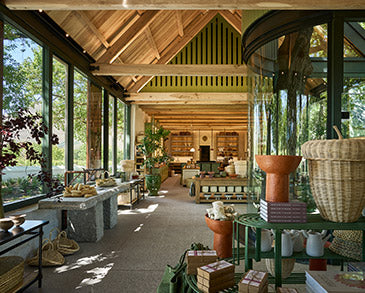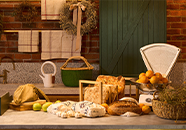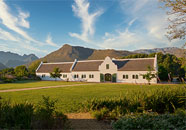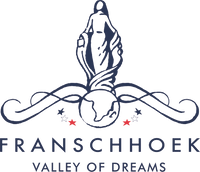Sauvignon Blanc is the fastest growing white variety and has become the most popular dry white wine in South Africa, for very good reasons. The drinker knows what to expect, the flavours are fresh and fruity and although there are area differences, at the everyday-drinking level the wines are generally not complicated, which means without feeling any pressure to analyse them and try to identify nuances, they can just be enjoyed. Sauvignon Blanc is compatible with seafood, salads, poultry, white meat and much more, and chilled, is the perfect lunchtime drink, crisp and refreshing. Usually unwooded, it also pleases those people who have a problem with oaked wines. Plus there’s the bonus that many affordable, good Sauvignons can be found, so it’s easy on the pocket.
However, this all tells just one side of the story, because the Cape is blessed with remarkable diversity (its flower and fynbos kingdom is the richest in the world), and that diversity influences grape flavours too. Compare the style differences between a Robertson Sauvignon Blanc with one from Darling or Stellenbosch. While recognisably still the same grape, they have different tastes as a result of climate and soil.
It is grown throughout the Cape’s winelands, except for the very hot areas like Northern Cape and the Klein Karoo, with the most concentration being in the Stellenbosch area. The chances are good that your supermarket Sauvignon comes from Stellenbosch, either directly or as part of a blend.
Where producers have more than one Sauvignon Blanc in their range, it’s usually because they found something special enough to have a ‘reserve’ wine, higher priced than the standard wine, and made in smaller quantities. A talented winemaker would try to harness the vineyard and area diversity in order to create something complex and possibly extraordinary. It takes effort and creativity – working out what matches, what creates the required layers, because the intention with a flagship is to create a wine with layers, with depth, with interest. Where the sum is greater than the individual parts.
But it also takes experience, because he/she must have a good working knowledge of the vineyards and what they’re capable of. What succeeds one year doesn’t necessarily the next, because of vintage differences in the regions, like too much rain one year, or too little the next, the effect of strong wind, heatwaves and so on. The challenge is to get a similar result from the different building blocks, to adapt from year to year so that the same end result is achieved, which is that particular style of Sauvignon Blanc for which that producer has earned a reputation.
To illustrate the point, let’s deconstruct La Motte’s two Sauvignon Blancs. The fruity and delicious classic La Motte Sauvignon Blanc has a Western Cape origin, which means it’s drawn from a wider area, from Franschhoek, Stellenbosch, Darling, Durbanville and beyond.
The Pierneef 2016 Sauvignon Blanc, the premium wine from the estate, has a more mineral character, closer to the Loire in style, and one which is the perfect seafood partner, from oysters to shellfish to line fish.
Sourced from Cape South Coast, each of the four components in this wine was carefully chosen for a particular contribution it makes to the final wine: Elgin (accounting for about 30%) has an apply character, with some minerality; Botriver (20%) adds passionfruit and blackcurrant and a fresh intensity; Napier (20%) provides a slate-like minerality and high acidity; Elim (30%) gives the greener notes, asparagus and green pepper. There are no clashes here, they fit seamlessly together, giving a fresh focus, with mineral and leafy notes, yet without sacrificing the fruit. The wine also contains 10% Semillon from Elim to add to the palate weight and give a rounder mouthfeel.
The two Sauvignon Blancs are quite different, which one you prefer is a question of personal taste, but to understand the complexity the variety is capable of, taste the two La Mottes side by side. For those with good cellaring facilities, the Pierneef ages beautifully, as demonstrated at a recent tasting of the 2006 vintage presented at the winery.

